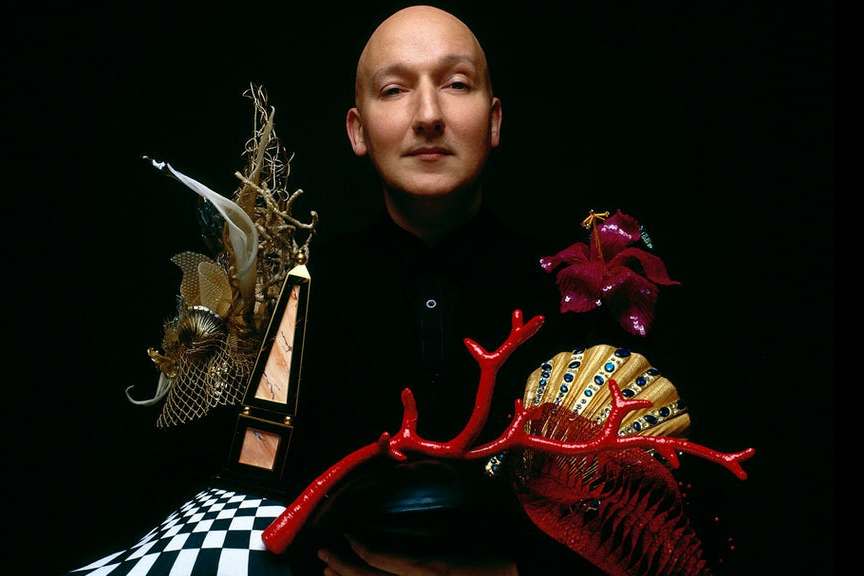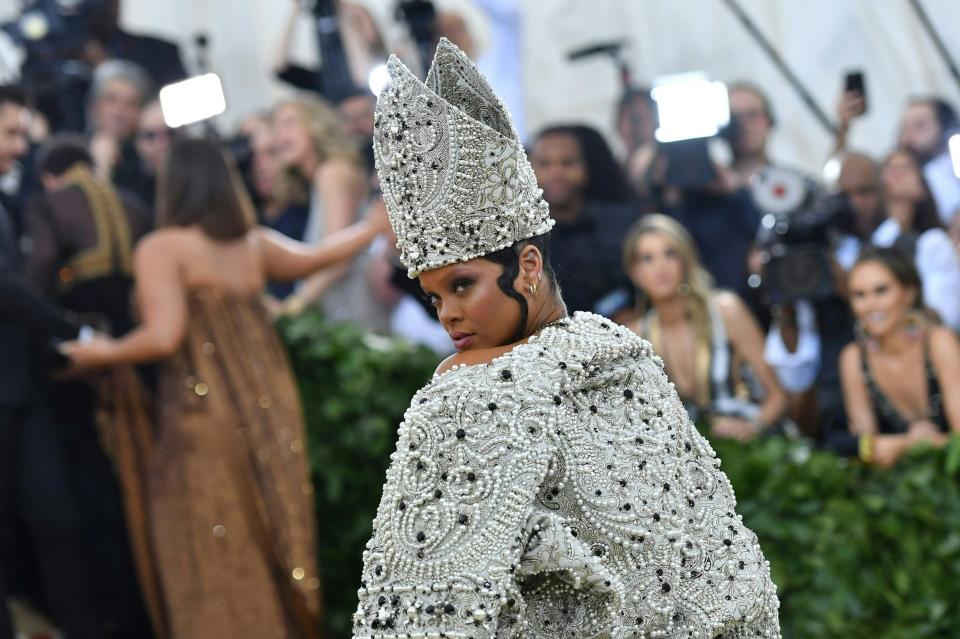Stephen Jones OBE: the man the fashion set have had on speed dial for 40 years

Stephen Jones OBE is no stranger when it comes to digital fashion.
While the Cheshire-native could be regarded as a gatekeeper of the old guard, and therefore the antithesis of the virtual world, fashion’s go-to milliner has made it his business to understand what makes millennials tick.
Take the couture collection he unveiled in June, for example. One would be forgiven for wondering just how Jones would manage transitioning to virtually showcasing the outré hat designs for which he’s revered, but for him, there was no question.
“Just a matter of months ago, I was thinking, how could I convey hats to a wider audience through something which was digital? And that’s when I thought of Noonouri, who I met many years ago in Seoul.”
Digital avatar and influencer Noonoouri is the creation of Munich-based graphic designer Joerg Zuber, who jumped at Jones’s suggestion of a collaboration. The milliner kitted out Noonouri in an array of his signature elaborately crafted designs.

“I like to do things that are very polite and orthodox, but then mix it with something completely new, assertive and maybe a bit unpleasant,” Jones asserts, chuckling. “Our real lives and our digital lives have been running parallel alongside each other for years, it’s only now that they’re beginning to coincide with one another.”
His life, which has been marked in equal parts by happenstance and luck, populated by a gallery of collaborators including Boy George, Diana, Princess of Wales, and Rihanna, is a show reel of fashion, fun and frivolity.
Between his eponymous brand, artistic directorship of hats at Christian Dior (after 24 years of partnership he was appointed last year making him the house’s first), countless designer collaborations and special projects including head treatments for the Met Costume Institute’s exhibitions.
After an “arty” childhood spent with his mother and engineer father (“they grew up during the war but had circumstances been different, they both would’ve gone to art school”), Jones flirted with producing womenswear whilst studying at college, before realising there was nobody designing high fashion hats. “Hats were just an extra to me, but when I left college there were lots of dress designers and no milliners, so I found my way and my friends kind of pushed me into it, because you can’t do this alone.”

A self-confessed ‘punk’, Jones moved to London from Liverpool and arrived in the capital in the eighties, where he frequented the legendary Blitz Club with the likes of Boy George.
“That time was truly wonderful; it was a group of like-minded people and we were quite competitive. Our clothing was our expression so we judged each other but we also helped each other, there were people doing fashion, doing film, doing art, and we all thought it was our duty to help each other. It was all about furthering our artistic creative careers, it was not about money,” he continues. “We actually though money was vulgar; a necessary evil, but we were not doing it for the money.”
He laments: “I was a club kid, so it really was that blend of music and fashion that exists only in London and that energy of youth culture that still inspires me.”
Given that he spent his youth railing against conventionality and capitalism, what does Jones make of today’s fashion industry and its proclivity for Insta-bait designs?
“The reason that fashion makes sense is that it has to evolve with the times, and it has to mirror the times because otherwise it becomes archaic and irrelevant,” he states. “The fashion of now is right for the time, if we were to bring back early 80s fashion or late 70s fashion, it would appear wrong.”

While the industry straddles on the precipice of ruin or revolution or both, Jones has embraced the changes of the fashionsphere, listing Cardi B, Janelle Monae and Rihanna as just a handful of the women he’s most enjoyed designing for. Indeed, Ms. Fenty has become one of Jones’ most longstanding collaborators.
“I met Rihanna years ago at a Dior show backstage when she’d just been on the cover of American Vogue. Anna Wintour had sent her to Paris to learn more about the industry and when I saw her I thought ‘Oh my God that’s Rihanna’, not thinking she’d have any idea who I was and as she started to approach me I began to introduce myself before she said ‘you’re Stephen Jones!’,” he recalls.
Since that fateful moment, not only has Rihanna worn Jones’ designs on various occasions (most notably the bishops’ hat she wore for 2018’s ‘Heavenly Bodies’ themed Met Gala), but the multihyphenate also collaborated with him for her spring/summer 2020 Savage x Fenty lingerie show.
Does he prefer working with American celebrities? “I don’t actually know what it is… I think that they really love fashion and they see a ‘hat’ as quintessentially British and so aren’t afraid to have fun with them.”

It’s precisely this element of fun that Jones revers so much about hats; they’re the cherry on the cake and a party on your head, he reminds me.
While fashion can be dismissed as being frivolous and vacuous, particularly in the midst of a global pandemic, Jones remains resolute about its overarching purpose. “This is the power of fashion: it’s something that means nothing but means everything and when the world is, you know, slightly falling apart, to be able to dress in a particular kind of way that uplifts your spirits is a wonderful thing.”
In fact it was a similar conversation Jones had with Shawn Stussy (founder of American apparel brand Stüssy) and Bárbara Hulanicki (founder of Biba) in Miami last year which inspired his upcoming autumn/winter collection.
“Shawn was telling me how despite his brand’s aesthetic, he still does all of his drawings in analogue because people still want to feel invested in something,” Jones reflects. “And then Barbara said something which I thought was just lovely. She said ‘what we do is sprinkle a little bit of magic fairy dust. And that’s exactly what fashion is; magic.’”

 Yahoo News
Yahoo News 
